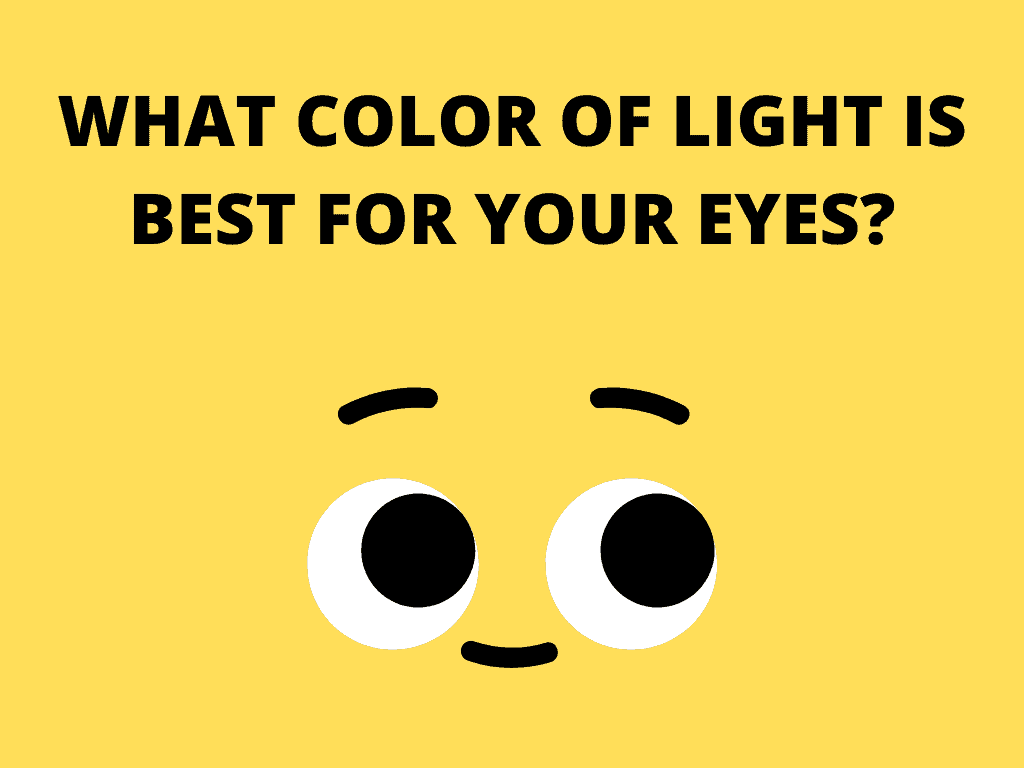A study in 2011 in the American Journal of Public health found a 12% increase in eye diseases caused by exposure to bright, fluorescent “cool” lights.
If you think about the spaces where you spend the majority of your time. When you’re making plans to decorate, style or build a home, at what point in the process do you think about the consequence the sources of light have on your eyes?

What about your working space? Most importantly, these places have purposes, whether it’s to rest or get work done and the last thing you’re focused on is lighting. The type of light you use and are exposed to most often affects not only the ambiance but also your eyes. So picking the right lighting source needs careful consideration.
What color light is best for your eyes – Ultimate Guide
Best and worst light sources for your eyes
Every day our eyes are exposed to different colors of light. Comparable to the color spectrum, every color has a different wavelength. When we talk about visible light, we’re really talking about a group of wavelengths of varying lengths.
For example, blue light has short wavelengths, whereas red has long wavelengths. Each color can have a different impact on our eyes and eye care.
Nature Bright SunTouch Plus Light and Ion Therapy For Eye Health

- Soothing light therapy lamp
- Emits 17,000 Kelvin UV-free light, which can uplift your mood
- 2-in-1 Light Therapy Lamp combines light and fresh air therapy in a compact design
Blue light is an especially helpful part of the light spectrum, helping us control our biological clock so we know when to sleep and when to wake up.
Blue light therapy can also assist with SAD(Seasonal affective disorder), a type of depression resulting from a shortage of daylight, and can even be valid as an antidepressant.
The good that comes from blue light, though, may be reduced by our overexposure to it, mainly because of the daily use of digital devices and LEDs and exposure to fluorescent bulbs.
While blue light increases attention and mood during the day, exposure to blue light at night lessens melatonin secretion and disrupts the circadian rhythm of alertness and sleepiness, which also supports regulate memory, mood, and hormonal balance.
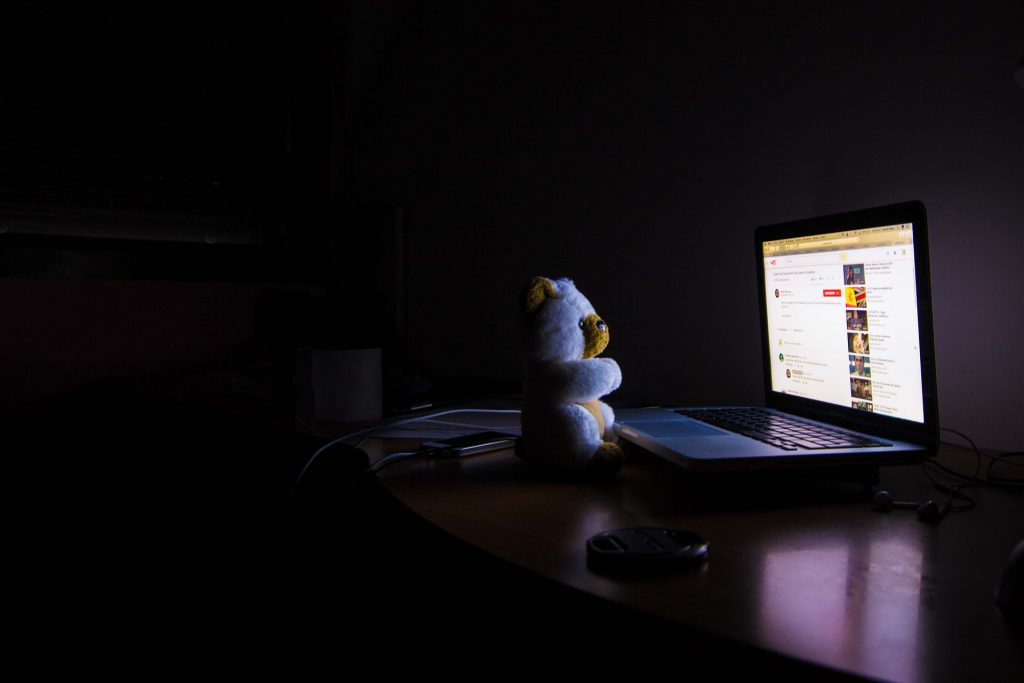
Slowed production of melatonin due to blue light exposure could be creating even more problems than insomnia, including blood pressure, diabetes and migraine headaches while causing considerable retinal stress and toxicity.
A good idea to reduce the amount of negative effects of blue light would be to reduce the amount of time spent using devices that produce blue light, such as computer screens, smartphones and other devices we use everyday.
If your job requires that you sit in front of a computer all day, a good way to reduce the amount of blue light is to use a screen filter or blue light blocking glasses. Screen filters for computers are one way to reduce the impact of blue light.
Blue Light Blocking Glasses Square Nerd Eyeglasses – For Better Eye Health(Transparent)

- Blue light blocking lens (WITH YELLOW TINT)
- 11 frame colors
You can also substitute white fluorescent tubes and LED lights with warm white tubes, halogen lights or incandescent lamps. Reducing the use of cellphones, tablets and laptop computers right before bed should also help to minimize negative effects of blue light that. Be aware that “black light” tubes common in night clubs and bars can also give off potentially harmful blue light.
Laptop Screen Protector -Blue Light and Anti Glare Filter – Get The Best Light Color For Your Eyes

- For laptops 13″-17.3″
- Blue light filter, Anti Glare, UV400 protection, Radiation Protection, Anti-static
Bright white and cool fluorescent tube bulbs and incandescent bulbs release the most UV radiation and cause the most damage to your eyes.
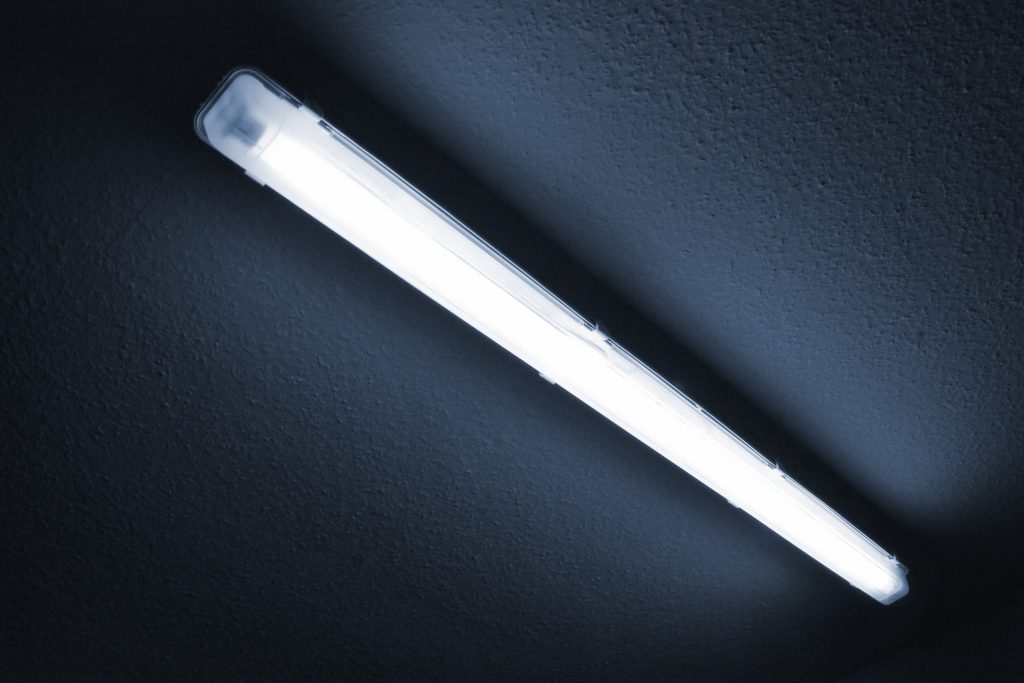
The problems noted in the 2011 study, mentioned above, were associated with this type of light source. Fortunately, there are a variety of other choices to pick from. Excessive exposure to blue light from sources, like phones, tablets, and some LED lighting, has also been shown to induce damage according to the American Optometric Association.
They also say that long exposure to sunlight, particularly in the teenage years and for those that don’t wear eye protection, can also lead to eye damage.
What these sources of light have in common is that they are shorter wavelength light sources.
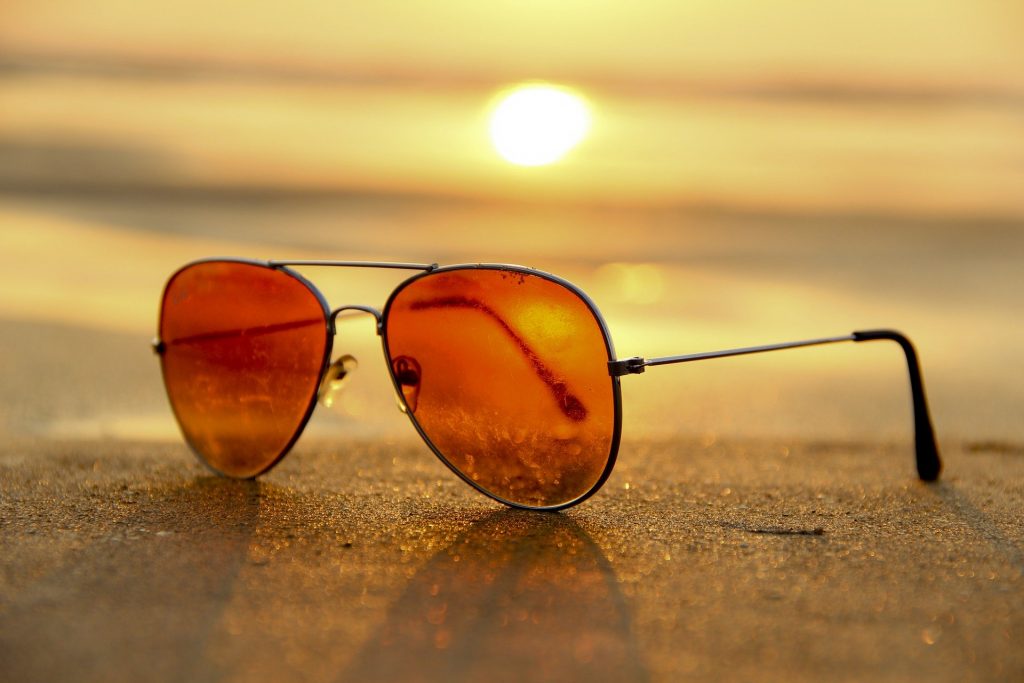
Other colored lights that can have an effect on your eyes are green lights, red lights, and yellow lights.
Green lights can help regulate the circadian rhythm. Overexposure to green light at night, as with blue light, can reset the clock, throwing off the natural rhythm.
Yellow light has been proven useful in protecting the retinas of patients exposed to extreme blue light since it offers the best contrast.
Sunglasses with yellow lenses can be very powerful in filtering out not only UV but blue light too. The lens of the eye naturally takes on a yellowish ting with age, to help filter out blue light.
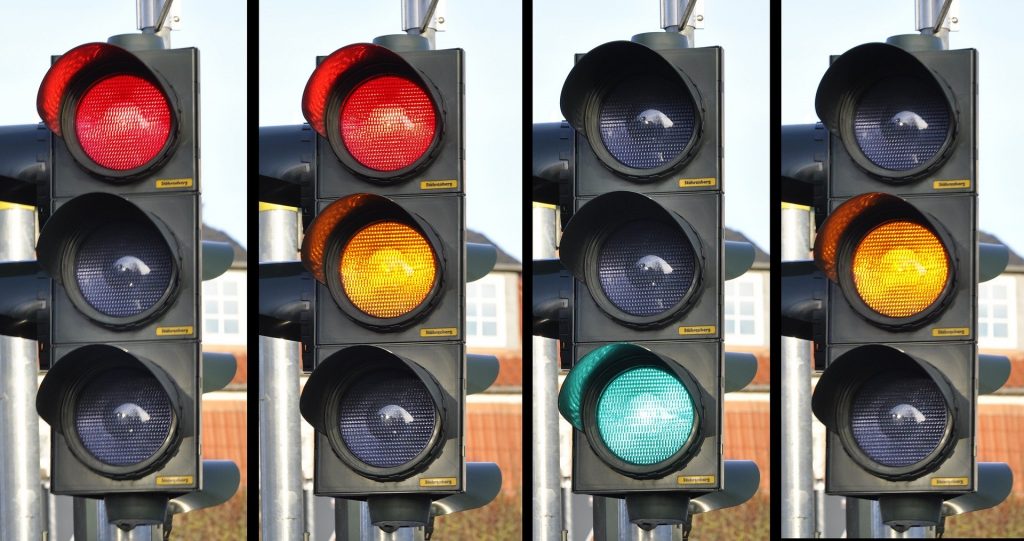
List of Lighting Tips for Healthy Eyes
- Get regular eye exams. An ophthalmologist will fully examine your eyes and alert you to any possible problems. They can also make individualized suggestions for your vision.
- Increase the use of natural light at work and at home. Most houses and even homes have UV resistant glass to protect from the sun’s UV rays. Open the curtains and blinds and turn off the electric lights when proper.
- When you`re outdoors, protect your eyes from the sun by wearing sunglasses and hats. Pick polarized glasses with anti-reflective coating.
- Avoid watching television in a dark room for long periods of time. If you fancy to watch TV in the dark, use an ambient backlight behind your television. This helps prevent eye strain.
- Use an e-reader to read digital products, like a Kindle Paperwhite, rather than a tablet or smartphone.
- Remember to keep your eyes moist. Remember to blink regularly and keep lubricating drops near your computer or on your desk.
- To minimize glare use anti-glare screens with computers and tablets. Also, use darker, matte paint in the area or room around your computer. Pick glasses with polarized or tinted glass and an anti-reflective coating.
- Change display settings on your computer monitor. Brightness should be close to the ambient setting, not brighter than the ambient lights. Change the color temperature to a warmer setting. Color temperature refers to the spectrum of visible light emitted. Cool or blue light has a short wavelength that generates more eyestrain. Finally, adjust text size and contrast to your satisfaction.
- Reorganize your desk to that your monitor is 20 to 30 inches from your eyes and so that you look somewhat down. Take regular breaks when working on your computer. Try the 20-20-20 rule: every 20 minutes, look 20 feet away for 20 seconds.
- Consider blue light blocking computer eyewear. Computer glasses are different than standard glasses, they are created for the precise distance between your eyes and the monitor and have an anti-reflective coating and a light tint.
- When using smartphones and tablets, hold them as far away as conveniently possible.

